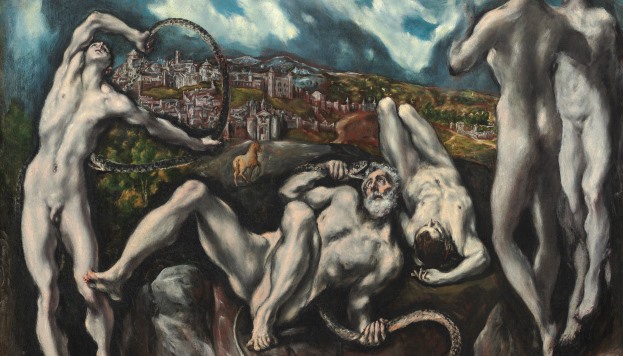
The Prado Museum joins in to commemorate the 400th anniversary of the death of El Greco with a large exhibition that points to a connection between the artist’s work and the avant-garde.
 We often use the cliché of the “painter ahead of his time”, as if the history of art were a linear series of discoveries. This exhibition, however, takes the opposite approach, showing how the avant-garde creators looked to the masters of the past – particularly painters like El Greco, forgotten until the 19th century – in search of a new artistic lineage. “El Greco and Modern Painting” does not set out to convince us that the sixteenth-century artist was really an Impressionist, a Cubist or an Expressionist, but rather to offer us a look at the different lenses through which his work has been viewed over the past 150 years, a period of time marked by two exceptional visits to the Prado Museum: that of Manet, who discovered the Spanish school in Madrid in 1865, and that of Bacon, a regular in the art gallery’s halls until his death in 1992. This approach is rooted in the fact that since its early days the art gallery, which houses the most important collection of El Greco’s art, has been a strong supporter of the painter’s work. As early as 1902 it put together the first anthological exhibition aiming to portray the extraordinary personality of his style. The exhibition was most likely viewed by Picasso, throughout whose career the Crete-born artist remained a decisive influence.
We often use the cliché of the “painter ahead of his time”, as if the history of art were a linear series of discoveries. This exhibition, however, takes the opposite approach, showing how the avant-garde creators looked to the masters of the past – particularly painters like El Greco, forgotten until the 19th century – in search of a new artistic lineage. “El Greco and Modern Painting” does not set out to convince us that the sixteenth-century artist was really an Impressionist, a Cubist or an Expressionist, but rather to offer us a look at the different lenses through which his work has been viewed over the past 150 years, a period of time marked by two exceptional visits to the Prado Museum: that of Manet, who discovered the Spanish school in Madrid in 1865, and that of Bacon, a regular in the art gallery’s halls until his death in 1992. This approach is rooted in the fact that since its early days the art gallery, which houses the most important collection of El Greco’s art, has been a strong supporter of the painter’s work. As early as 1902 it put together the first anthological exhibition aiming to portray the extraordinary personality of his style. The exhibition was most likely viewed by Picasso, throughout whose career the Crete-born artist remained a decisive influence.

From blue-period Picasso to Cubist Picasso; from the ochre tones of Zuloaga, whose Parisian studio displayed Vision of Saint John; to the Luminism of Sorolla; from the Delaunays, who lived in Madrid during World War I; to the acidic palette of German Expressionism; from Pollock’s early training years to the most narrative works of Orozco –El Greco’s influence has been vast. It is surprising to find similarities and offshoots in this exhibition which, like a game of ‘spot the difference’, invites us to scrutinise, from various perspectives, many of El Greco’s masterpieces alongside others by the most important artists of the 20th century. Among the artist’s most representative pieces, of particular note are Laocoön, a rarity in Spanish painting due to its mythological theme, and Saint Martin and the Beggar, whose artistic quality in the representation of textures is incredible. Particularly noteworthy modern works include various portraits by Cézanne, The Vision by Marc Chagall, and the Zuloaga collection. The latter artist is paid a silent tribute by the exhibition, which gives him a place alongside the great artists of his time (in my view, this is absolutely justified). This exhibition does not take the obvious route, pulling El Greco out of the past and viewing him through the clichéd lens of the “painter ahead of his time”. Rather, it shows us why Giacometti or Saura or Derain are as great as they are.